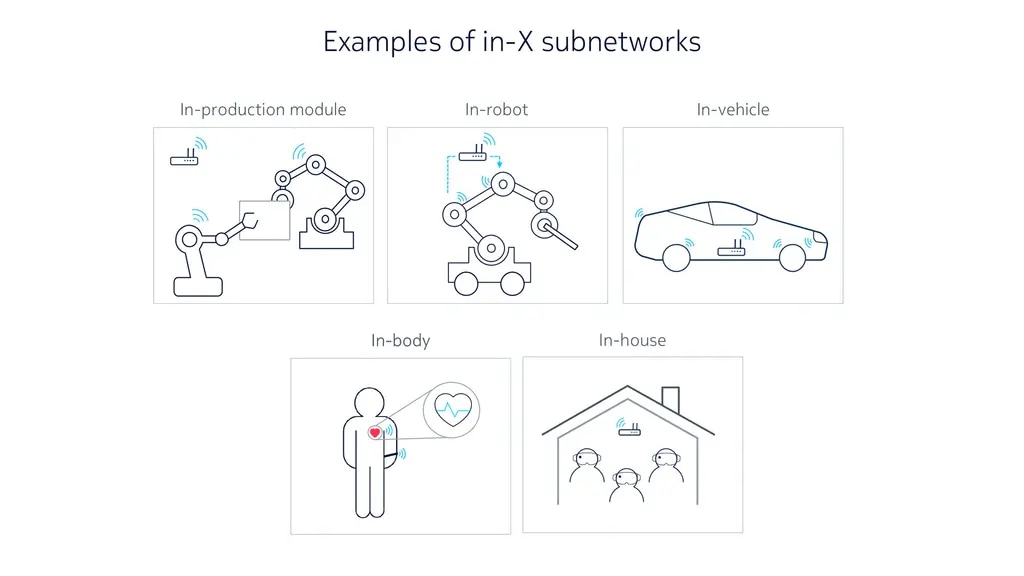How 6G could replace wires in life-critical communications

5G has done a tremendous job in improving reliability of wireless communication for a plethora of applications and services, but there is still work to be done before 5G can replace the inflexible, yet trustworthy, cable for all services. We use wireless connections for streaming, video calls and downloading big files because we accept the fact that our connections may suddenly drop or become intermittent. But for life-critical services such interruptions are intolerable. When it comes to engine control in vehicles, hazard prevention in factories or flight stability control in aircraft, the cable remains the gold standard for connectivity.
We believe, however, 6G will make it possible to eliminate wired communication entirely, at least for short-range transmission. In our 6G research, we are exploring how wireless can be used as an invisible cable, achieving the same level of latency and reliability as dedicated wires. This can unleash new possibilities for wireless communication such as replacing the highly sensitive internal networks in vehicles while maintaining the same service levels, lowering vehicle weight and reducing maintenance costs. A 6G network could enable flexible modular robots in an industrial IoT scenario. It could even keep our hearts beating and our limbs moving by providing the critical link in healthcare applications such as cardiac pacing or muscle control for disabled patients. This approach to 6G as a means of extreme connectivity is the subject of a new white paper describing in detail what we call “in-X” subnetworks. But let’s explore the larger implications of these new technologies.
What’s in in-X?
In our 6G vision, all highly sensitive connectivity should be in-X, meaning it is provided by highly specialized radio cells installed within the entity where the application runs, for instance in robots, production modules vehicles and even human bodies. We say subnetwork, because these specialized radio cells must be able to operate autonomously even when out of coverage of an overlay wide area network. These cells support life-critical services that cannot depend on connections to the overlay network, though they can benefit when those connections are available.

The possibilities for subnetworks are huge, but so are the challenges. Wireless is a shared medium, prone to detrimental effects such as fading, noise and interference – all of which could compromise the integrity of a subnetwork connection.
Spectrum is key
How can 6G support extreme connectivity requirements, which can demand loop cycles below 100 microseconds, more than six nines reliability or multi-gigabit data rates? The key is radio spectrum. A very large amount of spectrum is needed for making the in-X concept a reality because more spectral bandwidth allows for more robust connections, which in turn provide higher fault tolerances.
If a sufficiently large spectrum block is not available for an in-X subnetwork installed in a vehicle driving on the highway, for example, some of the sensors may stop working or may be forced to cope with intolerable delays. This may cause a slow vehicle response to hazards and possibly compromise the life of the drivers and passengers.
In general, spectrum below 10 GHz provides good propagation conditions for in-X subnetworks. Radio waves in this frequency range can easily travel through obstacles and therefore support reliable communications even in non-line-of-sight conditions between transmitter and receiver. For example, a sensor in a vehicle can reliably communicate with a controller even if the radio path is obstructed by the engine. However, this spectrum is largely occupied by other radio technologies (radar, satellite, cellular). That currently makes it impossible to accommodate subnetworks unless a large amount of spectrum is rededicated for their use.
One alternative, however, would be to operate underlay networks in the sub-10-GHz bands specifically for subnetworks, using a similar approach to ultra-wideband (UWB). Since their very short range allows these transmissions to operate at very low power, in-X transmissions would be mere whispers passing discretely between in-X devices under the “louder” networks operating in those bands. This could permit in-X subnets to co-exist with cellular, satellite and other wireless technologies.
Another possibility is to look to the higher frequencies, for instance 26-28 GHz millimeter waves. In this case, we have the opposite problem of sub-10-GHz: There is a large block of spectrum available, but propagation conditions are more complicated. Such frequencies are more sensitive to obstacles and blockage effects. We could eventually overcome those blockages through macro-diversity, deploying multiple antennas in the subnetwork area.
Finally, unlicensed spectrum has a role to play in subnetworks. We foresee future greenfield unlicensed spectra allocated to subnetworks, where new regulatory rules are tailored to their specific requirements and traffic types while still ensuring fairness among devices.
A proactive radio
Traditional radio systems are inherently reactive, meaning they measure the current radio signal quality and connectivity performance, and then adapt their communication parameters (transmit power, data rates, frequency bands) accordingly. Traditional systems are therefore allowed to fail and try again. For example, upon a failing to transmit a packet, a device would retransmit the same packet until it succeeded, possibly allocating more radio resources to each retransmission to make them more robust.
An act-after-fail approach, however, is unsustainable for life-critical in-X services. For instance, an anti-lock braking system can’t tolerate multiple – or even single – failed transmissions in an in-vehicle subnetwork commanding it to engage. Communications to support life-critical services must be proactive, following an act-before-fail approach. For example, instead of transmitting a packet only once and waiting for an acknowledgement, an in-X device would transmit the same packet multiple times simultaneously. The subnet could also transmit that packet over several different frequencies. Even if one or several of those duplicate packets failed to arrive, the extreme redundancy of the in-X design means the transmission would ultimately be received.
The challenge of interference
In-X deployments can lead to very dense scenarios, such as vehicles in a congested road or people attending crowded events. As radio spectrum allocated to in-X subnetworks would be finite, neighboring subnetworks may end up operating over the same frequencies creating high levels interference. A smart radio resource management is therefore needed for counteracting such interference and ensuring life-critical services in all conditions.
Moreover, we need to ensure subnetworks are robust enough to resist non-cellular interference. Someone trying to create havoc with critical systems could try to jam in-X systems by flooding the airwaves with noise, preventing subnetworks from transmitting. Any subnetwork must be able to fend of these kinds of malicious attacks.
When subnetworks are connected to an overlay wide area network, a central controller can manage the radio resources shared among neighboring subnetworks, minimizing mutual interference. Such centralized approaches are more efficient than distributed ones but depend on connectivity to the external network. They therefore may only be possible in controlled deployments, for instance robots in factory.
Since life-critical services cannot rely on a possibly intermittent connection to an external network, distributed solutions for interference management should also be in place. In a distributed solution, each subnetwork decides the frequency resources it will use by measuring local conditions. Here artificial intelligence techniques such as reinforcement learning could play a key role.

Extreme connectivity isn’t the only characteristic that will define 6G networks of the future. The Nokia Bell Labs white paper “Communications in the 6G era” outlines six key technologies that will transform networks as in the future, ranging from network sensing to security and trust to AI/ML air interfaces. We believe that extremely fast and reliable short-range communications will become a critical enabling feature of this 6G era as the world turns to wireless solutions for the final pieces of the connectivity puzzle.
Written by Paolo Baracca and Gilberto Berardinell
